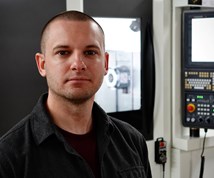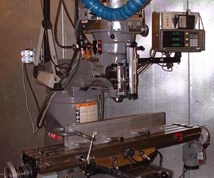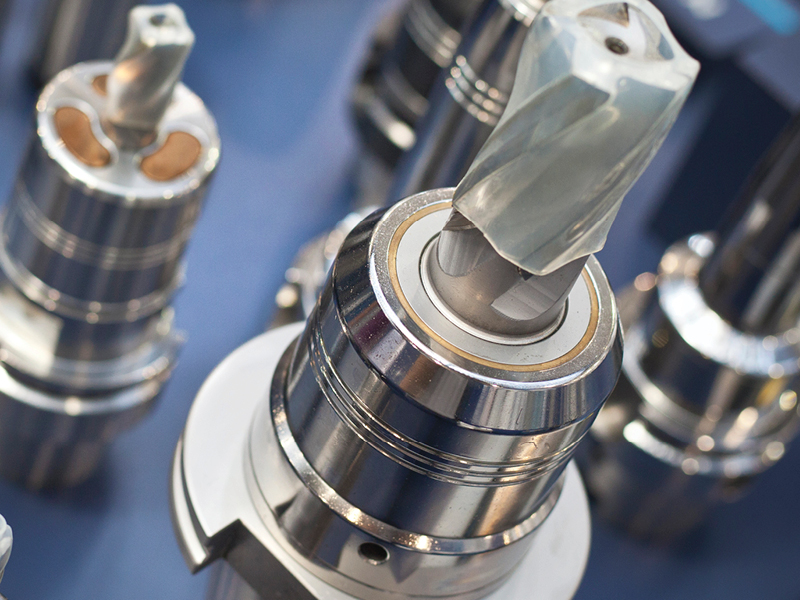5 Ways to Simplify Tasks for CNC Newcomers
Manufacturers can easily train new CNC users by simplifying tasks. Learn how to simplify CNC tasks for new hires in this CNC Tech Talk.
#successionplanning #workforcedevelopment #Basics
Many manufacturing companies are facing the same challenge: seeking new hires from a dreadfully depleted candidate pool. Sometimes, companies give up on finding and hiring skilled manufacturing people, and focus on finding people who simply show aptitude for learning and a willingness to work.
Since this kind of new hire is typically not prepared to hit the ground running, companies must find ways to bring them to a level at which they can proficiently perform their assigned tasks. So how can manufacturers train new hires without CNC manufacturing experience? I have always said that there are two ways to deal with proficiency issues: training and task simplification. Training brings a person to a higher level; people gain the proficiency required to perform complicated tasks. Simplifying tasks, by comparison, lowers required proficiency; less skilled people can perform simplified tasks. Here, we will concentrate on task simplification, providing five CNC-operator-specific suggestions.
Featured Content
1.) Provide operation procedures
New CNC operators often learn machine-related procedures by watching them being done. An experienced person performs the procedure with the newcomer looking on. While new CNC operators will eventually learn procedures that are demonstrated (many times) in this manner, experienced operators can save a lot of time, effort and questions by providing step-by-step instructions for common machine-operation tasks. Procedures must still be demonstrated and practiced, of course, but at least newcomers will have something to reference, which will minimize how often they need to ask experienced people for help.
2.) Match machined surfaces to related sizing adjustments
This suggestion applies to all CNC operators, but is especially important for newcomers to the CNC environment. Sizing adjustments are done regularly to keep machined surfaces within their tolerance specifications. Some type of offset is commonly used to make the sizing adjustment, and the offset number for the register(s) used is usually tied to the cutting tool’s station number. If tool #1 machines the surface, for instance, offset #1 will be used to adjust it.
Setup people (who load cutting tools and size in the first part) obviously know which cutting tool machines each workpiece surface. But after setup, the job is often turned over to a CNC operator. Since the operator did not load the cutting tools, they will not know which offsets are related to each workpiece surface being machined.
By one means or another, simplify what it takes for CNC operators to relate the surface being machined to the offset number that controls its size. Do not make them figure out which cutting tools machine critical surfaces. Instead, provide a marked-up drawing showing the various machined surfaces, possibly in different colors, with each color representing a different offset number.
3.) Provide variable gauges with digital displays
Common variable gauges, including micrometers and calipers, are often used to take measurements needed for sizing adjustments. Though shop people should eventually learn how to read all types of variable gauge displays, including digital, dial and Vernier, start simple. Entry-level operators will have enough problems learning how to hold the variable gauge and apply the proper amount of pressure when taking measurements. Do not further complicate the task by starting them off on gauges with displays that they will be unable to read.
4.) Provide all required tolerance values
There are at least three ways to specify dimensional tolerances. Here are three examples that all specify the same tolerance:
- Plus/minus the specified tolerance amount: 5.000 +/- 0.005
- High/low limits: 5.005/4.995
- Plus one value minus another: 5.003 +0.002, -0.008
CNC operators must, of course, be able to take measurements and then determine whether the measured value falls within its tolerance band. If it does not, or if it is dangerously close to a tolerance limit, a sizing adjustment will be required. When a sizing adjustment is required, the CNC operator must be able to determine the deviation between the measured value and the target value (often the mean value of the tolerance, but not always).
With the exception of deviation values, ensure that CNC operators do not have to calculate any of the required values. Provide them with the high and low limits, as well as the target value for every surface that requires sizing adjustments.
5.) Explain company-specific terminology and unwritten rules
Each company has its own way of naming and describing its departments, products, part families and processes. This kind of colloquialism makes it difficult for newcomers to get familiar with their new work environment. Part of any company’s new-hire orientation must be to adequately describe those things that make the company unique.
In addition, most companies have certain undocumented rules and policies that workers are expected to know and adhere to. One common example is related to tool offsets: In many companies, the primary offset number for any cutting tool will be the same as the tool station number. While offset numbers may not be specified in production run documentation, CNC people are simply expected to know this. Be sure new hires are updated on any such rule or expectation that is not expressly specified in the documentation that accompanies the jobs they will be working on.
RELATED CONTENT
-
Machine Shop Marketing
How will you connect with your next customer? Two contract shops describe methods that seem to work.
-
From Job Shop Chaos To Lean Order
Classic lean manufacturing principles are practically taken as gospel, but benefits can be elusive for manufacturers that produce a variety of parts in low volumes. This shop took a different approach to lean—one aided by software that helped identify a more efficient machine layout based patterns in part routings.
-
When Handing Down the Family Machine Shop is as Complex as a Swiss-Turned Part
The transition into Swiss-type machining at Deking Screw Products required more than just a shift in production operations. It required a new mindset and a new way of running the family-owned business. Hardest of all, it required that one generation let go, and allow a new one to step in.


.jpg;width=70;height=70;mode=crop)










 (1).1676494398075.png)

